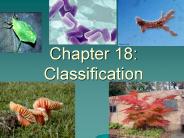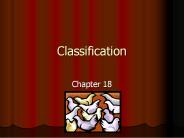Arcto PowerPoint PPT Presentations
All Time
Recommended
emissivity, snow/ice albedo. skin temperature equation. BPRC Polar WRF. Testing of Polar WRF ... Antarctic albedo set at 0.8. RAMP DEM 1 km resolution terrain data ...
| PowerPoint PPT presentation | free to view
Grizzly bear (Ursus arctos horribilis) Brown bear (Ursus arctos) ... Narrow range of groundstone tools. axes, adzes, hammers, wedges. Logs are split into planks ...
| PowerPoint PPT presentation | free to view
To group them in a logical manner. Taxonomy process of classifying organisms ... Figure 18-5 Classification of Ursus arctos. Modern Evolutionary Classification ...
| PowerPoint PPT presentation | free to view
Krásné fotky 1: Savci - Piękne Fotki 1: Ssaki (Daktylek) Slon africký - Loxodonta africana; Slon indický - Elephas maximus; Nosorožec dvourohý - Diceros bicornis; Nosorožec tuponosý - Ceratotherium simum; Medvěd hnědý - Ursus arctos; Medvěd lední - Ursus maritimus; Orangutan bornejský - Pongo pygmaeus; Šimpanz - Pan; Zubr - Bison bonasus; Jak - Bos mutus; Štětkoun - Potamochoerus; Klokan obrovský - Macropus giganteus; Žirafa masajská - Giraffa tippelskirchi; Žirafa síťovaná - Giraffa reticulata; Lev pustinný - Panthera leo; Tygr - Panthera tigris; Puma - Puma concolor; Gepard - Acinonyx jubatus; Levhart - Panthera pardus; Jaguár - Panthera onca; Pardál obláčkový - Neofelis nebulosa; Jaguár - Panthera onca (melanická forma); Irbis - Panthera uncia; Rys kanadský - Lynx canadensis; Vlk obecný - Canis lupus (mládě); Zebra stepní - Equus quagga; Pakůň žíhaný - Connochaetes taurinus; Impala - Aepyceros melampus; Kudu velký - Tragelaphus strepsiceros ... music: Ji Pyeong Kwon — Sad Romance
| PowerPoint PPT presentation | free to download
L'univers fractal de l'Ours blanc Ursus arctos. La capture des moules par l'Huitrier-pie ... Femelles: 0.567 kg sd 0.11. 3. R sultats. Importance de la strate arbor e. Analyse des ...
| PowerPoint PPT presentation | free to download
OMJ-98. Switch from density dependent larval mortality in an accumulated cod ... Positive correlations between vernal freshwater discharge and recruitment in ...
| PowerPoint PPT presentation | free to view
Scientific Names. Latin. Genus species (Genus ... WHO WANTS EXTRA CREDIT! Rattus norvegicus. Camelus bactrianus. Gorilla gorilla. Equus zebra. Elephas maximus ...
| PowerPoint PPT presentation | free to view
... Notes 18.1 Why Classify? Assigning Scientific Names Naming Continues 7 Levels to Linnaeus System 7 Levels for Grizzly Bear ...
| PowerPoint PPT presentation | free to view
Chapter 18-1: Finding Order in Diversity Essential Questions: How are living things organized for study? What is binomial nomenclature? How does Linnaeus s system ...
| PowerPoint PPT presentation | free to download
In the study of aboriginal peoples in North America, both ... Narwhal (Monodon monoceros) narval. Adults: 4-4.9 m, 900-1600 kg, tooth: 2-3 m in length ...
| PowerPoint PPT presentation | free to view
Globally competitive, locally engaged: higher education institutions as a ... Nord-Norge: 463.000 inh. 10 % 107.000 km2 35 % Trondheim. 20.000 students. Bergen ...
| PowerPoint PPT presentation | free to view
Century Gothic Arial Times Koi design template Classification (p.447-450) Why Do We Classify? Linnaeus s System Slide 4 What is a Species? Scientific ...
| PowerPoint PPT presentation | free to view
Determine patterns of change in traits. Directions rates of change in traits ... behavioural evolution of Australasian wolf spiders ...
| PowerPoint PPT presentation | free to view
Cannibalism included from 1984. Older, larger, more experienced N. Atlantic cod have a disproportionally higher ... b) Older fish spawn over a more prolonged ...
| PowerPoint PPT presentation | free to view
Chapter 18: Classification * * 18 1 Finding Order in Diversity Life on Earth has been changing for more than 3.5 billion years 1.5 million species named between 2 ...
| PowerPoint PPT presentation | free to download
Ailuropoda melanoleucas. Classifying Life. Hierarchical System of ... Genus Ailuropoda (2 species) Genus Helarctos (1 species) Genus Melurus (1 species) ...
| PowerPoint PPT presentation | free to view
Title: TETRAPODA - N GYL B AK Alt rzs: ANAMNIA - MAGZATBUROK N LK LIEK Oszt ly: AMPHIBIA - K T LT EK Author: Winkler Daniel Last modified by
| PowerPoint PPT presentation | free to download
Classification The organization of living things DOMAIN ARCHAEA DOMAIN EUKARYA Kingdoms Eubacteria Archaebacteria Protista Plantae Fungi Animalia DOMAIN BACTERIA
| PowerPoint PPT presentation | free to view
This Report provided by 24 Market Reports is about, the Outdoor Gear in Global market, especially in North America, Europe and Asia-Pacific, South America, Middle East and Africa. This report categorizes the market based on manufacturers, regions, type and application.
| PowerPoint PPT presentation | free to download
... Half of the seals worldwide live in greek seas They can live approximately 40 years WWf organization protect these species Sea turtle (Caretta caretta) ...
| PowerPoint PPT presentation | free to download
Bears They (ursids) are the heavyweights of the land varnivores and generally omnivores (omnivores = an animal that is both vegetable and animal food necessary has to ...
| PowerPoint PPT presentation | free to view
This report studies Outdoor Gear in China market, focuses on top manufacturers in China market, with revenue, gross margin and market share for each manufacturer
| PowerPoint PPT presentation | free to download
Biological Classification Chapter 18
| PowerPoint PPT presentation | free to view
Chapter 18: Classification * * 18 1 Finding Order in Diversity Life on Earth has been changing for more than 3.5 billion years 1.5 million species named between 2 ...
| PowerPoint PPT presentation | free to download
One of the world's smallest wild cats. Found in southern Africa. Mule deer. Odocoileus hemionus ... deer of Robert Schomburgk. Named after a person. Elaphurus ...
| PowerPoint PPT presentation | free to view
'Speciation' from Divergent Evolution. Speciation:The process by ... Is a horse and A donkey the same species? No, because their offspring (Mule) is sterile. ...
| PowerPoint PPT presentation | free to view
Phylogeography Phylogenetics Understanding phylogenetic trees Major approaches to determining phylogenies Phylogeography
| PowerPoint PPT presentation | free to view
Scan returned document list. Read topic. Choose query terms. Enter terms ... Scan returned document list. Method. 4 college student participants ...
| PowerPoint PPT presentation | free to view
Classification of Living Things The Father of Taxonomy His system for naming, ranking, and classifying organisms is still in wide use today (with many changes).
| PowerPoint PPT presentation | free to view
Classification Chapter 18
| PowerPoint PPT presentation | free to view
Ch. 18, Classification 18-1: Finding Order in Diversity How living things are organized Binominal Nomenclature Linnaeus s System of Classification
| PowerPoint PPT presentation | free to view
Unit 11: Classification of Living Things * In 1735, Carolus Linnaeus published the first edition of his Systema Naturae, which set forth his system for classifying ...
| PowerPoint PPT presentation | free to view
Examples: e.g., chimpanzees and humans share a common ancestor that lived ... Macrolepiota procera : tasty. Lepiota cristata : highly poisonous. Classification ...
| PowerPoint PPT presentation | free to view
Classification Chapter 18
| PowerPoint PPT presentation | free to view
Title: No Slide Title Author: Traylor Multimedia Last modified by: mendyb Created Date: 9/4/2001 1:42:48 PM Document presentation format: On-screen Show
| PowerPoint PPT presentation | free to download
Helps release roots from the bottom of ponds to eat ... Mute swan (Cygnus olor) Tundra Swan (C. columbianus) Trumpeter Swan. Trumpeter Swan ...
| PowerPoint PPT presentation | free to view
Why classify? Humans have developed classification systems in order to make sense of the abundant biological diversity that exists in nature.
| PowerPoint PPT presentation | free to view
to bring order to the large number of various organisms ... Giant panda. Red fox. Abert squirrel. Coral snake. Sea star. KINGDOM Animalia. PHYLUM Chordata ...
| PowerPoint PPT presentation | free to view
Temperate Deciduous Forest Just Beautiful!! Temperature Summers are mild, and average about 70 F (21 C), while winter temperatures are often well below freezing, 32 ...
| PowerPoint PPT presentation | free to download
Classification Chapter 18 Why Classify? Think of all the things around you they can easily be put into organized groups, such as food types at a grocery store ...
| PowerPoint PPT presentation | free to download
Map of Italy (Ministero dell'Ambiente-Servizio Conservazione della Natura Maiorano G. ... Prunella modularis. Loxia curvirostra. Acantis cannabina. Phyrrhula pyrrhula ...
| PowerPoint PPT presentation | free to view
Does not have spikes It is a Stegosaurus Done Activity Velociraptor Pterodactyl Spinoaurus Ankylosaurus Apatosaurus T.Rex Stegosaurus Activity Make a dichotomous ...
| PowerPoint PPT presentation | free to view
... Classification Key Activity Velociraptor Spinosaurus Make a dichotomous key about these 4 organisms Triceratops Ankylosaurus Here is a question you might see on a ...
| PowerPoint PPT presentation | free to view
... technique using fuzzy matching to discover Spanish cognates for English. ... system by providing a display of the Spanish translation of English query terms. ...
| PowerPoint PPT presentation | free to view
One of at least 36 species belonging to the family Canidae, which includes the ... Their coats are made up of woolly fur to provide insulation and long guard hairs ...
| PowerPoint PPT presentation | free to view
Classification Why? Biology Ch 18 * A tree of life based on derived characteristics jus an example no need to memorize! * You DO need to now how this works.
| PowerPoint PPT presentation | free to view
... Kingdoms and Domains 6 kingdoms of Life 3 Domain system of classification Finding Order In Diversity What is a species? A population of organisms that share ...
| PowerPoint PPT presentation | free to view
Translingual Retrieval: retrieval where query and document languages differ ... Conversion. Indexing. Tokenization. Morphology. Text. Database. Polyglot Text ...
| PowerPoint PPT presentation | free to view
Fungi ex: Morel mushrooms. Plantae ex: Pinus ponderosa. Animalia ex: Homo sapiens ... Mushrooms, yeasts. Plantae. Eukaryote. Cell walls of cellulose; ...
| PowerPoint PPT presentation | free to view
Biologists use 7 Levels of Classification Linnaeus named about 4000 species Carolus Linnaeus developed systems for naming & organizing species into groups.
| PowerPoint PPT presentation | free to download
The first catalogue of that museum includes the inventory ... Dianthus carthusianorum L. ssp. Floare Andercoiani Coman (after the name of the author`s mother ...
| PowerPoint PPT presentation | free to view
Biotic factors living things that influence an ecosystem. ... Grizzly bear. Black bear. Giant panda. Red fox. Abert squirrel. Coral snake. Sea star ...
| PowerPoint PPT presentation | free to view
Ch. 18 Classification Systems Classification in biology, is the identification, naming, and grouping of organisms into a formal system. The vast numbers of living ...
| PowerPoint PPT presentation | free to view
1.2 LW % ????? ????????: ???????? 6 ??????????? ??????? ... GS 21 -31 rm 25 vrl 25 hrl -25 vrl CL 0.5 LW S GR % ??????????? ????????: ????? ?? ?????? ...
| PowerPoint PPT presentation | free to download
























































